
books
These are books from my personal collection; some I’ve had for years, while others were obtained more recently while I was researching information for this site. I’m certain my personal library will continue to grow as I put together more content, so I’ll try to keep this section up to date:
1000 Tin Toys
Kitahara & Shimizu
704 Pages
Taschen
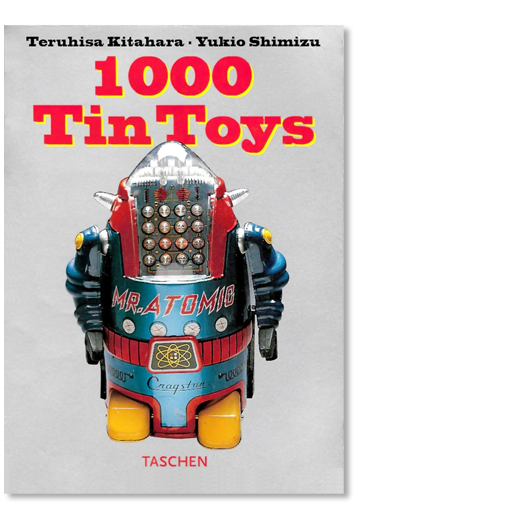
My friend Robert gifted this book to me in 1996, and it’s been an indispensable reference and source of inspiration since. Edited by legendary collector Teruhisa Kitahara and Yukio Shimizu (and largely taken from Kitahara’s personal collection), it’s a picture book first and foremost, categorized by type. Taschen has released multiple revised editions over the years, a testament to its longevity and popularity. Despite the lack of editorial (it only includes a brief introduction by the authors), if I could only own one book about tin toys, this would be it – for both practical and sentimental reasons.
Vintage Toys: Robots and Space Toys
Bunte, Hallman & Mueller
184 Pages
Antique Trader Books
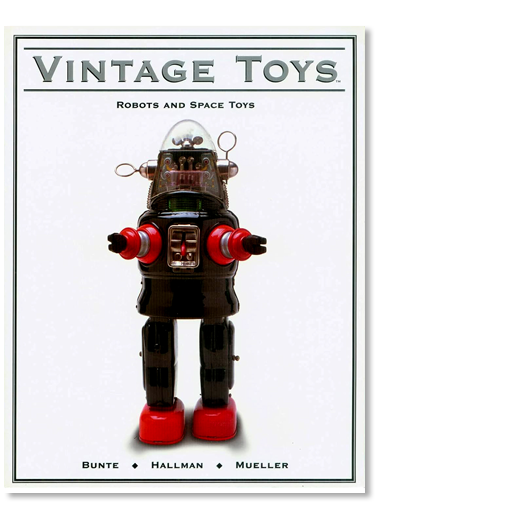
On the (sort of) other end of the spectrum is this gem, published from the collector’s perspective. Not only is it loaded with history, anecdotes and estimated valuations that one might expect from a book of this nature, it’s fully illustrated throughout with full-color photos depicting a generous representation of tin robots and space toys that defined the golden age. It’s hard for me to imagine the amount of research that must have gone in to putting it together in the first place – truly a labor of love. It was the first book I purchased when I set out to put this site together, and I can’t overstate how helpful it has been.
Japanese Tin Toys: from 1880s to 1920s
Nobuo Kumagai
288 Pages
Sogensha
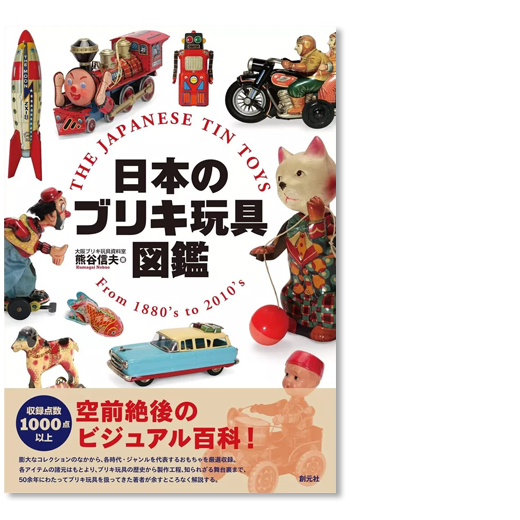
This 2022 book is a historical retrospective of all tin toys produced in Japan (I sometimes forget that tin toys didn’t start or end with robots :D). Along with other science fiction toys, they are well represented, particularly in the later years that defined the tin toy age. A thorough and beautifully presented overview of the rich history of burikki omocha designed and produced in Japan, with sections devoted to topics like the manufacturing process and prominent producers that defined the industry from the earliest days and beyond.
Robots 1:1 and Robots 1:2 (R.F. Collection)
Rolf Fehlbaum
273 pages (1:1)
351 pages (1:2)
Vitra Design Museum
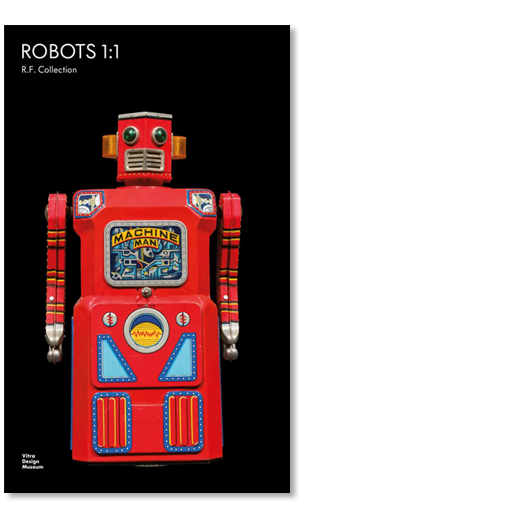
This is my newest book (published January 23), and must be seen to believe: Germany’s Vitra Museum holds founder Rolf Fehlbaum’s massive tin robot collection, and they’re depicted at actual size in the 1:1 book (limited to 1000 signed copies), and at half scale in the 1:2 edition (hence the titles). Both volumes are striking in design, with the robots and their accompanying boxes emerging from stark black backgrounds. The 1:2 edition has more robots (and pages), but browsing the robots at full scale in the 1:1 book is remarkable. In the foreword, Fehlbaum describes tin robots as “small kinetic sculptures of great originality.” Well said.
Tin Toys: 1945-1975
Michael Buhler
80 Pages
Quick Fox
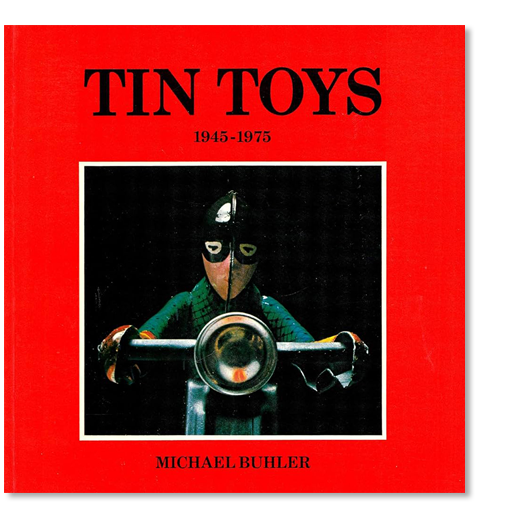
This isn’t the most comprehensive book about tin toy robots, or even about tin toys in general, but it’s a sentimental favorite: I discovered a copy at a used bookstore when I was a college undergrad, and it rekindled my appreciation of tin toys as a unique and relevant art form. Much of the book covers early European and American toys, with an 8-page section toward the end devoted to Japanese tin robots and other science fiction toys. It helps put into perspective how Japan’s robot era came to define the zenith of innovative tin toy engineering before plastic toys took over the industry.
Future Toys
Emchowicz & Nunneley
224 Pages
New Cavendish Books
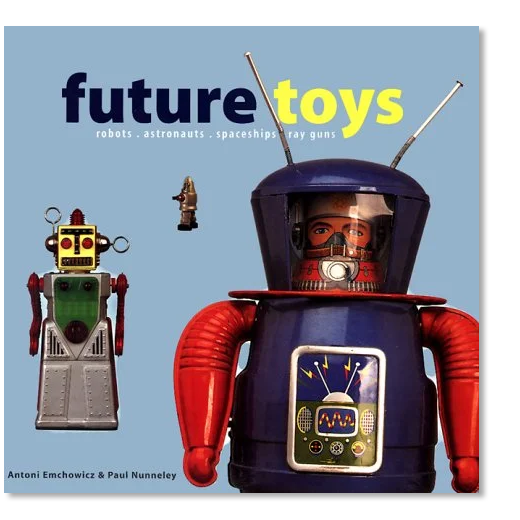
Another beautiful picture book loaded with robots and other futuristic toys influenced by the space race era. While not exclusively about tin robots, they make up the majority of the book, and many are accompanied with original packaging. One thing that makes this book special is its large format, which enabled the authors to depict some of the robots and other toys at a large scale. There’s also a section at the beginning devoted to the manufacturers, including logos of the key players during the 1950s and 60s.
Wonderland of Toys: Tin Robots
Teruhisa Kitahara
112 Pages
Shinko Music Pub Co. Ltd.
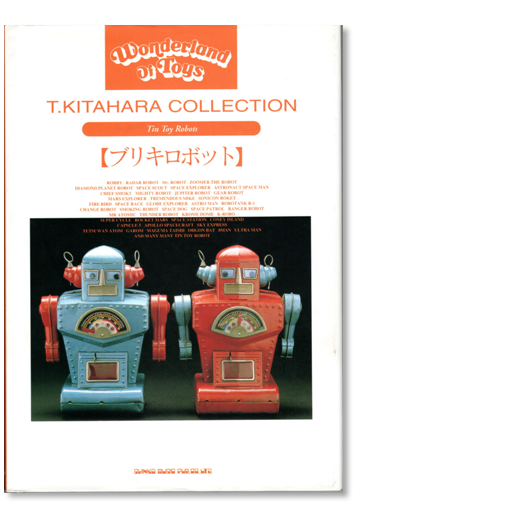
One of a series of Wonderland of Toys books documenting Teruhisa Kitahara’s massive collection of tin toys, this volume dedicated exclusively to robots. It shares DNA with Taschen’s 1000 Tin Toys, but also includes robots not shown in that book. Also exclusive to this book is a chapter at the end with historical information about the robots represented throughout, including producers and years. My version is in Japanese, but it’s also available in English with a different cover.
Atom no Omocha (Astro Boy Toys)
Yutaka Izawa
96 Pages
Dobunshoin
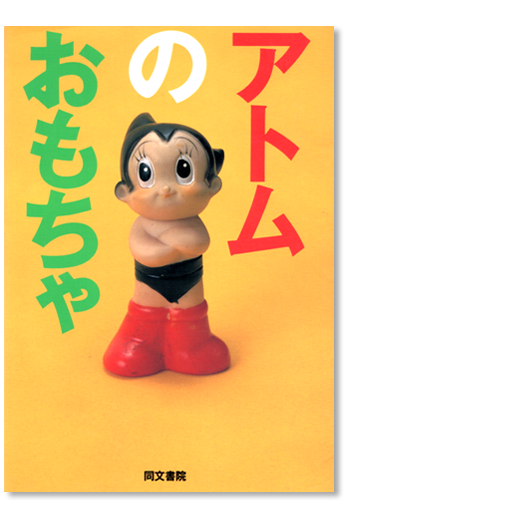
Not exclusively a tin toy book, but since many of the toys marketed for manga and anime hero Astro Boy during his heyday were crafted in tin, it’s full of photos you won’t see elsewhere, and serves as a reminder of the cultural impact of Osamu Tezuka’s creation, especially during the 1950s and 60s. The book features more than 200 toys and household items from the collection of Yutaka Izawa, the world’s leading Astro Boy collector. Beyond robots, the book also includes a surprisingly large selection of tin toy vehicles that incorporate his likeness, like cars, trains, commuter buses, planes, speedboats, fire trucks and more.
Robot Zukan (Robot illustrated Reference)
J. Yamashita
158 Pages
Green Arrow
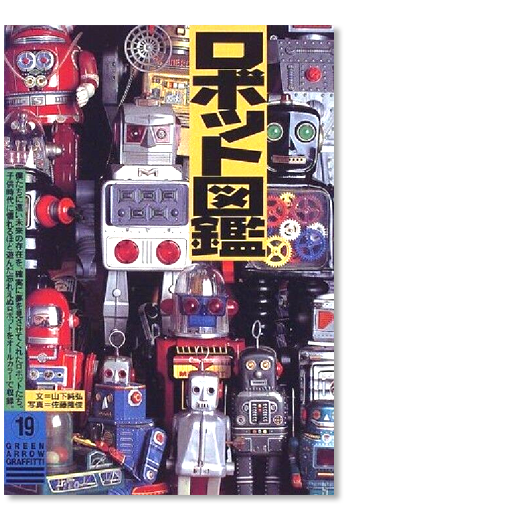
Belying its compact format, this all-in one-reference is jam packed with photos and information on more than 130 notable toy robots produced in Japan from the 1940s-70s. It includes a handful of robots I haven’t seen elsewhere, and like some of the other books mentioned here, includes an introductory section with basic information about industry history and manufacturers, Published in 1997, the text is entirely in Japanese and the book has been out of print for some time, but can be found in the secondhand market at a reasonable price.
Made in Japan: Transistor Radios
Handy, Erbe, Antoinier
108 Pages
Chronicle Books
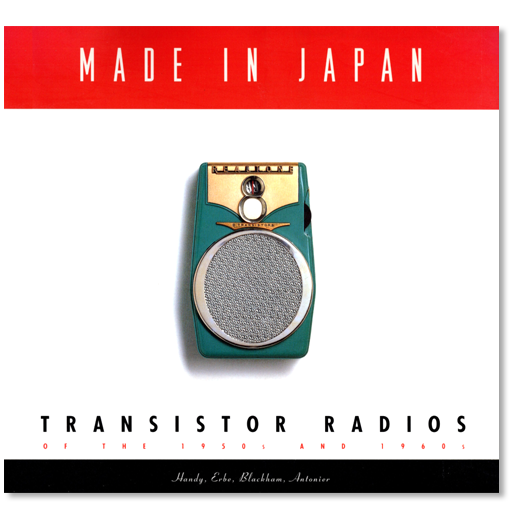
This book isn’t about tin toys at all, but chronicles a product phenomenon from Japan that coincided with the tin toy golden age during the mid-20th century, and has some interesting parallels. Like tin robots, portable transistor radios from Japan exploded onto the scene during the 1950s and 60s with futuristic designs and innovative features, and have become highly collectible in the years that followed. The companies that produced these pocket-sized marvels evolved into some of the biggest electronics firms in the world today, like Sony, Toshiba and Hitachi. The book is beautifully designed and well documented.

